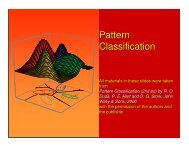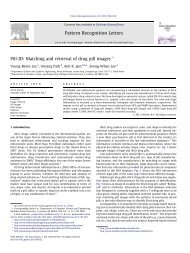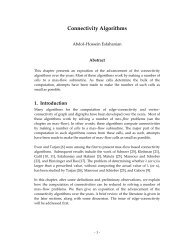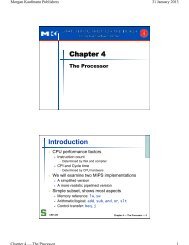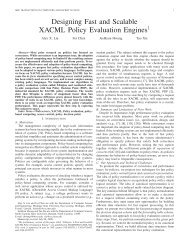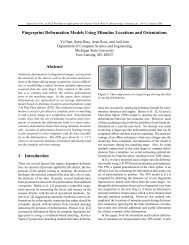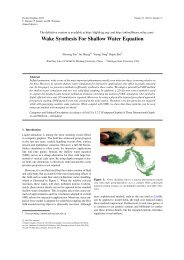Selecting the Right Objective Measure for Association Analysis*
Selecting the Right Objective Measure for Association Analysis*
Selecting the Right Objective Measure for Association Analysis*
You also want an ePaper? Increase the reach of your titles
YUMPU automatically turns print PDFs into web optimized ePapers that Google loves.
(e.g., odds ratio [25]), <strong>the</strong>y have properties that make <strong>the</strong>m unsuitable <strong>for</strong> o<strong>the</strong>r<br />
applications.<br />
In this paper, we per<strong>for</strong>m a comparative study of <strong>the</strong> properties <strong>for</strong> twentyone<br />
existing objective measures. Despite <strong>the</strong> general lack of agreement among<br />
many of <strong>the</strong>se measures, <strong>the</strong>re are two situations in which <strong>the</strong>y become consistent<br />
with each o<strong>the</strong>r. First, we show that <strong>the</strong> rankings produced by many measures<br />
become highly correlated when support-based pruning is used. Support-based<br />
pruning also tends to eliminate mostly uncorrelated and poorly correlated patterns.<br />
Second, we show that a technique known as table standardization [25, 5]<br />
can also be used to make <strong>the</strong> measures consistent with each o<strong>the</strong>r.<br />
An alternative way to find a desirable measure is by comparing how well<br />
<strong>the</strong> rankings produced by each measure agree with <strong>the</strong> expectations of domain<br />
experts. This would require <strong>the</strong> domain experts to manually rank all <strong>the</strong> contingency<br />
tables extracted from data, which is quite a laborious task. Instead, we<br />
show that it is possible to identify a small set of “well-separated” contingency<br />
tables such that finding <strong>the</strong> most suitable measure using this small set of tables<br />
is almost equivalent to finding <strong>the</strong> best measure using <strong>the</strong> entire data set.<br />
1.1 Paper Contribution<br />
The specific contributions of this paper are as follows.<br />
1. We present an overview of twenty-one objective measures that were proposed<br />
in <strong>the</strong> statistics, social science, machine learning, and data mining literature.<br />
We show that application of different measures may lead to substantially<br />
differing orderings of patterns.<br />
2. We present several key properties that will help analysts to select <strong>the</strong> right<br />
measure <strong>for</strong> a given application. A comparative study of <strong>the</strong>se properties is<br />
made using <strong>the</strong> twenty-one existing measures. Our results suggest that we<br />
can identify several groups of consistent measures having similar properties.<br />
3. We illustrate two situations in which most of <strong>the</strong> measures become consistent<br />
with each o<strong>the</strong>r, namely, when support-based pruning and a technique known<br />
as table standardization are used. We also demonstrate <strong>the</strong> utility of supportbased<br />
pruning in terms of eliminating uncorrelated and poorly correlated<br />
patterns.<br />
4. We present an algorithm <strong>for</strong> selecting a small set of tables such that domain<br />
experts can determine <strong>the</strong> most suitable measure by looking at <strong>the</strong>ir rankings<br />
<strong>for</strong> this small set of tables.<br />
1.2 Related Work<br />
The problem of analyzing objective measures used by data mining algorithms has<br />
attracted considerable attention in recent years [26, 21, 20, 24, 6, 16, 35]. Piatetsky-<br />
Shapiro proposed three principles that must be satisfied by any reasonable objective<br />
measures. Our current work analyzes <strong>the</strong> properties of existing measures<br />
using <strong>the</strong>se principles as well as several additional properties.





